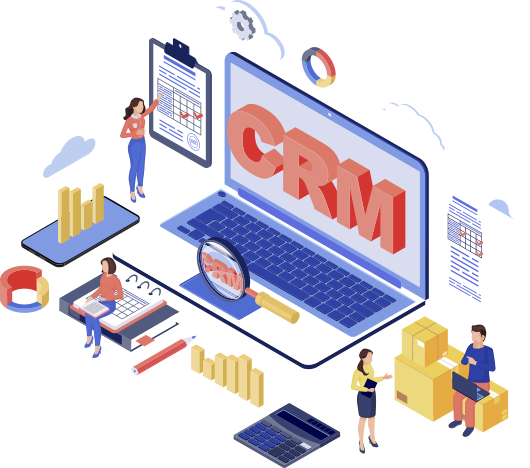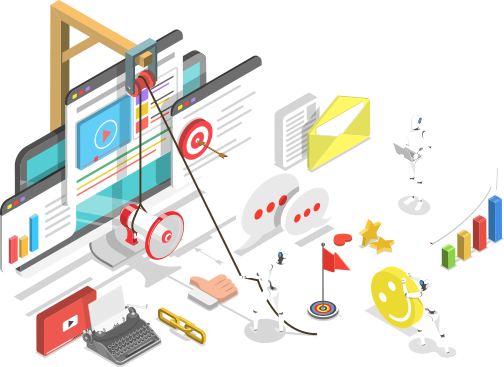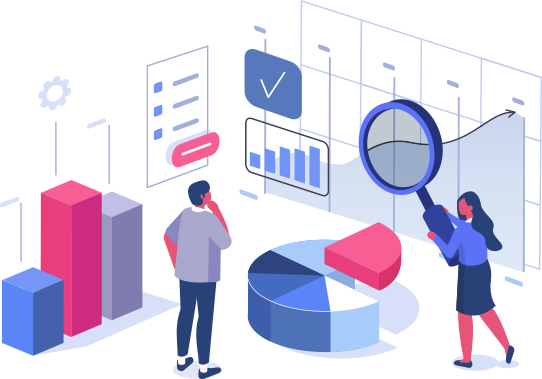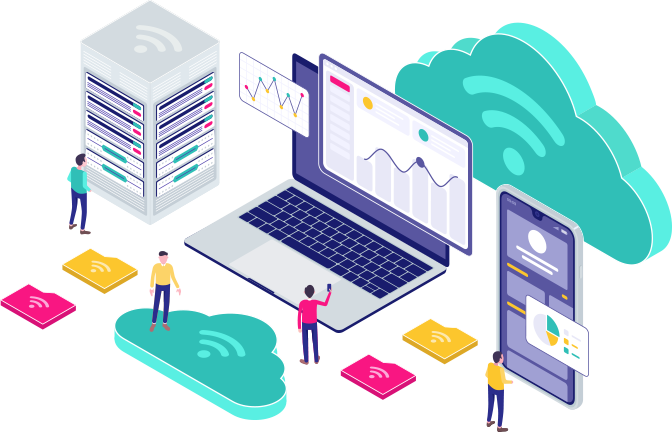Contents
-
Get, Set, Go
Customers today have the option of interacting with brands through a plethora of channels and they expect a seamless experience. It has become even more critical for companies to acquire the right set of customers at the minimal acquisition cost, engage with them, retain them and maximize their lifetime value. For businesses to be able to achieve this, traditional ways of approaching technology investments do not suffice. Companies need new tools that can help navigate the complex customer journeys.
Let’s look at the suite of products that are required in the MarTech stack. All the tools should be aligned to the overall strategy and the tools should complement each other in aligning the various departments and functions like Marketing, Operations, Sales, Digital, Finance, IT and Analytics.
An ideal MarTech stack has all the appropriate technologies and applications to manage the entire customer lifecycle – attracting the right customers, engaging with them, and retaining them in an efficient and profitable manner. Let us look at some of the key ingredients of a good stack. Many of these tools will be relevant across different stages of the customer lifecycle.

Content Management System (CMS)

Content is the core of Inbound marketing strategy. Content predominantly drives leads in a sustained manner. The right content can be a true differentiator while engaging with customers. Content can be in the form of blogs, articles that deep dive into a subject, podcasts, videos, or any other interesting information. The CMS or Content Management System acts as a central hub for all content publishing and ensures that the right content is delivered to the right audience at the right time.
-

Search Engine Optimization (SEO):

When consumers have a need, either for a product or any information, search is most often the first port of call. The search query contains signals of intent that can be leveraged by marketers and it is an important lever to increase organic traffic. SEO helps in understanding the trends in searches and help companies define their content strategy.

Conversion Rate Optimization (CRO):

CRO is the process of converting visitors to customers and hence increasing the conversion rate. Conversion could be the performance of an intended action. It could be purchasing a product, enrolling for a program, subscribing for a newsletter or adding an item to cart and so on. SEO and CRO go hand in hand. While SEO directs traffic to the website, CRO ensures higher engagement and conversion. CRO tools have a range of features that allow marketers to run A/B testing, analyze visitor behavior, and ultimately boost the conversion rate.
-

Customer Data Platform (CDP)

One of the primary functions of a CDP is to create a persistent unified customer database that is accessible to other systems.
A CDP integrates variety of first party, second party as well as third party data from a range of sources like CRM, offline transactions, online transactions, social media or any other external source of data. The nature of data includes demographics, transactional, behavioural, engagement as well as qualitative data. A CDP typically connects to a wide range of data sources using built-in connectors.
A CDP is much more than a customer single view. It not only integrates data from diverse sources, the data is also made readily available to be integrated downstream by various applications. CDP also has provision for many functionalities like segmentation, analytics and reporting capabilities through which brands can hyper personalize their engagement.
-

Customer Relationship Management (CRM)

CRM is an ideal tool to manage customer interactions along the journey. Right from the time a lead gets converted to a customer and all along the customer growth and retention path, CRM tools can be used to capture these interactions effectively. They are a powerful tool in engaging with customers and retaining them. There are many CRM tools available and irrespective of the one a brand opts for, it is necessary to integrate this with the other components of the stack like Campaign management.

Campaign Management

Campaign management tools help in managing campaigns across multiple channels. These also have some amount of automation and campaign tracking capabilities inbuilt. They also help in providing intelligence and feedback as to which kind of campaigns are working and which are not. They provide reports on open rates, click rates which can be used to improve engagement. Some campaign management tools also provide complex attribution tracking.
-

Marketing Automation

Marketing Automation tools allow organizations to engage with customers and leads on multiple channels seamlessly and automate repetitive tasks. They can be used in multiple areas like leads scoring & prioritization, segmentation, leads nurturing, up-sell, cross-sell as well as retention. Automation tools help in providing a standardized and personalized experience on a consistent basis. They help brands scale up fast and help in integrating diverse channels real time. They act as a central platform to control and deploy all marketing activities and provide valuable feedback real time. To provide personalization at scale, automation tools are a must.
Social Listening


Social media tools help track the buzz about the brand in the digital space. They can be used to understand early signals on emerging trends and track engagement. One important consideration is to arrive at the right metrics to track performance. It is easy to fall in the trap of optimizing for vanity metrices like “Likes” and “Shares” while missing the bigger picture. There are a range of tools that can integrate activity from among the top social media sites as well as popular blogs to provide an integrated view for the brand.
-

Digital Analytics

This is a must have if a sizeable portion of the business is online. They help track visitors to the website, the source from where they come, their engagement on the site, drop-off points, time spent and so on. They also provide insights on how visitors are interacting with the content. Once brands have different segments or personas, it allows brands to go deeper and understand what content works for each of the segments. Digital analytics tools also help understand the impact of paid advertising and search advertising.

Chat BOTS

Chat BOTS today are the ultimate virtual assistant, helping customers in answering their queries, find products, perform transactions, play their favorite song and many more. They play a big role in personalizing the experience and increasing engagement. Intelligent BOTS use every interaction to learn more about the customer, which is then used as feedback to improve the personalisation even more. They can play an important role at every stage of the customer journey. They can help qualify leads and assign the leads to the right sales representative. For existing customers, they help engaging with customers better and improve loyalty.
-
Business Intelligence Tool

To assess if all the marketing interventions is producing the right results, Business Intelligence plays an extremely important role in the MarTech stack. They aid in visualizing data, deriving insights and tracking every rupee spent across the customer journey.

If there is a central data repository, the BI tool can directly access the repository, else they can also integrate data from multiple databases. They can support a range of requests like deep dive into a business problem, slicing and dicing from different perspectives and so on. Many visualization tools can perform fairly complex data visualization in a very intuitive, drag and drop manner.
Lead Management System


A lead refers to anyone that could be interested in your product or service. This intent of interest could be expressed based on certain actions performed by the lead – like sharing contact details, registering for a demo, subscribing for a newsletter and so on. Lead management refers to the process of capturing leads, engaging with them through the sales funnel and then eventually converting them to customers.
Lead Management Systems help marketers engage, qualify and nurture potential leads. They can also be used to prioritize the leads into various segments based on their sales readiness. They can also be used to plan an engagement strategy for lead nurturing. Typically, Lead management and conversion is a joint responsibility between Sales and Marketing. While Marketing usually drives the process of capturing the leads, Sales is better placed for the final conversion. Nurturing is usually a joint effort.
-

Digital Asset Management (DAM)

Digital Asset Management (DAM) is a tool that stores and organizes digital assets in a central repository. Digital assets could be documents, photos, audio files, video files or any other media.
This is primarily relevant for large brands that manage multiple digital assets. DAM’s help in managing multiple assets with features like version control, access rights and so on. It provides security and allows searching of assets efficiently.
As content is a critical element for driving engagement, this plays a very important role in marketing efficiency and effectiveness.


